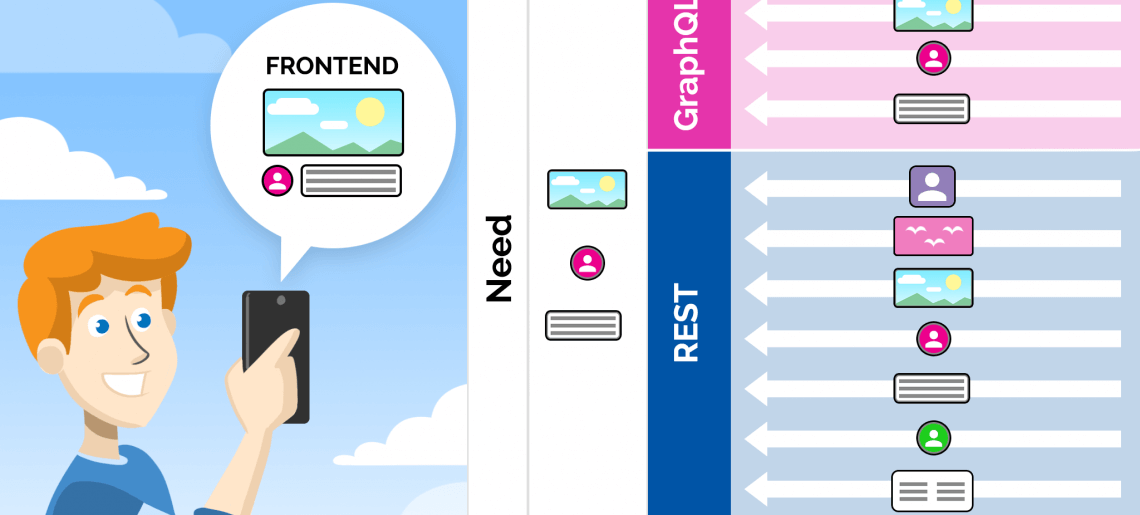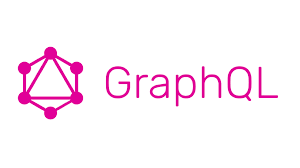GraphQL vs. REST | What are the differences?

APIs are invaluable for the needs of most businesses that offer services to their customers through the web and mobile platforms. Every API requires a feature-rich and easy-to-use framework to facilitate the required functionality.
The security, accessibility, and authentication options provided by frameworks like GraphQL and REST are vital for programmers. GraphQL vs. REST can be a puzzling choice for many who are new to development and API functionality. Read on to gain a better understanding of both and their differences.
Reading this article you will learn:
- What is a GraphQL API
- The advantages of GraphQL
- The downsides of GraphQL
- What is a REST API
- The advantages of REST
- The downsides of REST
- The differences between GraphQL and REST
- A comparison table
Contents
- 1 What is GraphQL?
- 2 What are the benefits of GraphQL?
- 3 What are the downsides of GraphQL?
- 4 What is REST?
- 5 What are the benefits of REST?
- 6 What are the downsides of REST?
- 7 GraphQL vs REST | What are the differences?
- 8 GraphQL vs REST Comparison Table
- 9 Conclusion
- 10 General FAQ
- 11 What is a GraphQL API?
- 12 What is a REST API?
- 13 What are the differences between GraphQL and REST?
What is GraphQL?

GraphQL refers to a query language and runtime for application programming interfaces, known for giving users the precise data they are looking for. GraphQL enables developers to create flexible and fast APIs, and it can be deployed within an integrated development environment known as GraphiQL. GraphQL is widely considered as a viable alternative to REST. Developers using GraphQL can create requests capable of fetching data from numerous sources within an API call.
GraphQL users can add or remove fields within an API without making any changes to currently existing queries. Users can use their chosen API development methods and rely on GraphQL to maintain the desired functionality for clients.
Try GraphQL using the GraphQL Playground.
What are the benefits of GraphQL?
These are the main advantages of using GraphQL:
Declarative data fetching
GraphQL utilizes declarative data fetching for its queries. This is advantageous to users as data can be selected, including its fields and entities, with a single query request across data relationships.GraphQL dictates which fields are required by its UI, functioning in principle, as a solution where the UI is fetching data.
GraphQL queries are efficient in partially selecting data for UI operations for retrieving data in a single request. Clients using GraphQL are aware of data requirements, and servers are aware of the data structures and the requirements for using data from a source.
Lack of overfetching
GraphQL does not perform any over fetching of data. This is different from a RESTful API setup where a client generally over fetches data if there is an identical API. In GraphQL, the mobile client has the option of selecting different fieldsets. This enables GraphQL users to fetch only the specific piece of information required for a user query.
GraphQL is versatile
GraphQL is more versatile than most developers consider it to be. It is decoupled from backend and frontend solutions and has reference implementation in JavaScript. It facilitates the use of server-side and client-side across JavaScript libraries, including Express, Angular, Hapi, Koa and Vue, and several others. GraphQL is capable of functioning similarly to the language-independent interface of REST.
What are the downsides of GraphQL?
These are the major drawbacks of a GraphQL API.
Problems with handling complex queries
GraphQL queries can run into performance-related problems, even though it lets clients perform specific requests. The issues occur if and when a client demands many nested fields simultaneously. This is one of the reasons that many users opt for REST API when conducting complex queries, as it enables them to fetch data through multiple endpoints using precise queries. Despite the need for several network calls, avoiding the performance issues of GraphQL might be a safer option.
Not necessary the best option for small applications
A smaller application may not require GraphQL as it can benefit from the simplicity of REST. GraphQL is more well-suited for use cases where there are many multi-services. REST is also preferred as a better option for establishing connections for resource-driven applications, as these do not need GraphQL flexible queries.
Caching is complex
GraphQL does not use HTTP caching processes that facilitate the storage of request content. Caching enables users to cut down on the amount of traffic to a server by making regularly accessed information more easily available.
Steep learning curve
GraphQL is considered by many as difficult to get a grasp of due to its steep learning curve. Users may need to learn the Schema Definition Language to start using GraphQL. It may not be possible for all projects to allocate time and effort for gaining familiarity with GraphQL. As a result, they tend to opt for the easier to understand REST. Gaining an understanding of GraphQL queries can take a considerable amount of time, even though there are several useful features.
What is REST?

REST, which stands for Representational State Transfer, is an architectural style for establishing the norms between web and computer systems. It facilitates more natural communication between computer systems. RESTful systems are signified by their statelessness and their tendency to differentiate the server and client concerns. In a REST architecture, users can achieve independent implementation of the client and the server. It translates to the client-side code becoming changeable without having any effects on server operations. Moreover, the server-side code can be changed without it having any effect on client operations.
What are the benefits of REST?
Here are the main advantages of a REST API.
REST is scalable
REST is a protocol known for its scalability and preferred by many due to this reason. It draws a line between server and client, enabling more effortless scaling of a product.
It is quite portable and flexible
REST is also known for its flexibility and portability. Users find it easier to port data from one server to another or make changes to a database at any given time. Developers can choose to host frontend and backend on separate servers, enabling better management.
It offers more independence
As client and server are separated in a REST protocol setup, developers find it a lot easier to implement developments across different areas of any project independently. Moreover, a REST API is capable of adapting easily to different platforms and syntax. As a result, developers can make use of different environments during the development phase.
What are the downsides of REST?
Here are the disadvantages of a REST API.
Client-Server
One limitation of REST stems from the fact that it relies on the concept of server and client being separate from each other, and can grow independently.
Stateless
REST APIs are stateless in nature and allows developers to make independent calls. Each of its calls has all the data required for completion.
Requests Overhead
REST is stateless and this type of API can raise the request overheads as voluminous incoming and outbound call loads are handled. A REST API has to be optimized for cacheable data storage.
Interface
The decoupling of a client from the server requires a uniform interface that facilitates independent app evolution without requiring the app services, actions or models, which are included within the API layer.
On-demand code
Code on Demand is a feature that enables applets and code transmission through the API for being used within the application.
Layered structure
REST APIs have different architecture layers that create a hierarchical structure for modular and scalable apps.
GraphQL vs REST | What are the differences?
HTTP status codes
The common status code for every GraphQL request, error, or success is 200. It is quite different from REST APIs where different status codes point to different responses i.e., 200, 400, and 401 represent success, bad request, and unauthorized, respectively.
Monitoring
Monitoring is more convenient with HTTP status codes and REST APIs. Performing a health check on a particular endpoint gives users an idea of API uptime status. For instance, a 200 status code signifies that an API is running. This is quite a contrast from GraphQL as response body parsing has to be performed through a monitoring tool to detect any possible errors being returned.
Caching
In REST API it is possible to cache all server-side GET endpoints with a content delivery network. Endpoints get cached by browsers and bookmarked for regular calls in the future. GraphQL is not compliant with the HTTP specifications and is made available through a single endpoint. As a result, queries are not cached in a manner similar to that of REST APIs.
Schema and type system
REST APIs do not rely on type systems of a schema. Conversely, GraphQL uses a type system to create API definitions. Fields mapped to types define a schema, which is an agreement of sorts between client and server.
GraphQL vs REST Comparison Table
The table below showcases the most fundamental differences between GraphQL and REST.
| GraphQL | REST | |
| Technology | New | Mature |
| Ideal for | Large apps | Small / Medium apps |
| Architecture | Client-driven architecture | Server-driven architecture |
| Operation types | Mutation, query, subscription | CRUD |
| Main Benefit | No overfetching | Data is not bound to resources or methods |
| Organization type | Schema and type system | Endpoints |
| Data fetching | Single API call for specific data fetching | Multiple API calls with fixed data |
| Community | Expanding | Large |
| Performance | Fast performance | More time needed for multiple calls |
| Speed of development | Fast development | Slow performance |
| Learning complexity | High | Low |
| Self-documenting | Yes | No |
| File upload option | No | Yes |
| Web caching option | Only with libraries | Yes |
| Stability | Fewer errors, auto validation, and type checking | More suitable for complex queries |
Conclusion
GraphQL is query language and runtime for application programming interfaces. It’s a new technology, and it’s benefits include the versatility, declarative data fetching, and the lack of overmatching. There are downsides as well, and they are the steep learning curve, caching complexity, and complex queries performance.
REST is an architectural style for establishing the norms between web and computer systems. It’s an old and proven technology, and it’s benefits include scalability, caching, and independence. There are downsides as well, and they are the requests overhead, you can lose the ability to maintain state, and it’s a generic layer (not specific enough).
Looking through the information given above can help you make the right GraphQL vs. REST decision. Get in touch with an experienced software consultant to choose the suitable option for your needs.
General FAQ
What is a GraphQL API?
GraphQL is query language and runtime for application programming interfaces. It’s a new technology, and it’s benefits include the versatility, declarative data fetching, and the lack of overmatching. There are downsides as well, and they are the steep learning curve, caching complexity, and complex queries performance.
What is a REST API?
REST is an architectural style for establishing the norms between web and computer systems. It’s an old and proven technology, and it’s benefits include scalability, caching, and independence. There are downsides as well, and they are the requests overhead, you can lose the ability to maintain state, and it’s a generic layer (not specific enough).
What are the differences between GraphQL and REST?
– HTTP status codes
– Monitoring
– Caching
– Schema and type system



